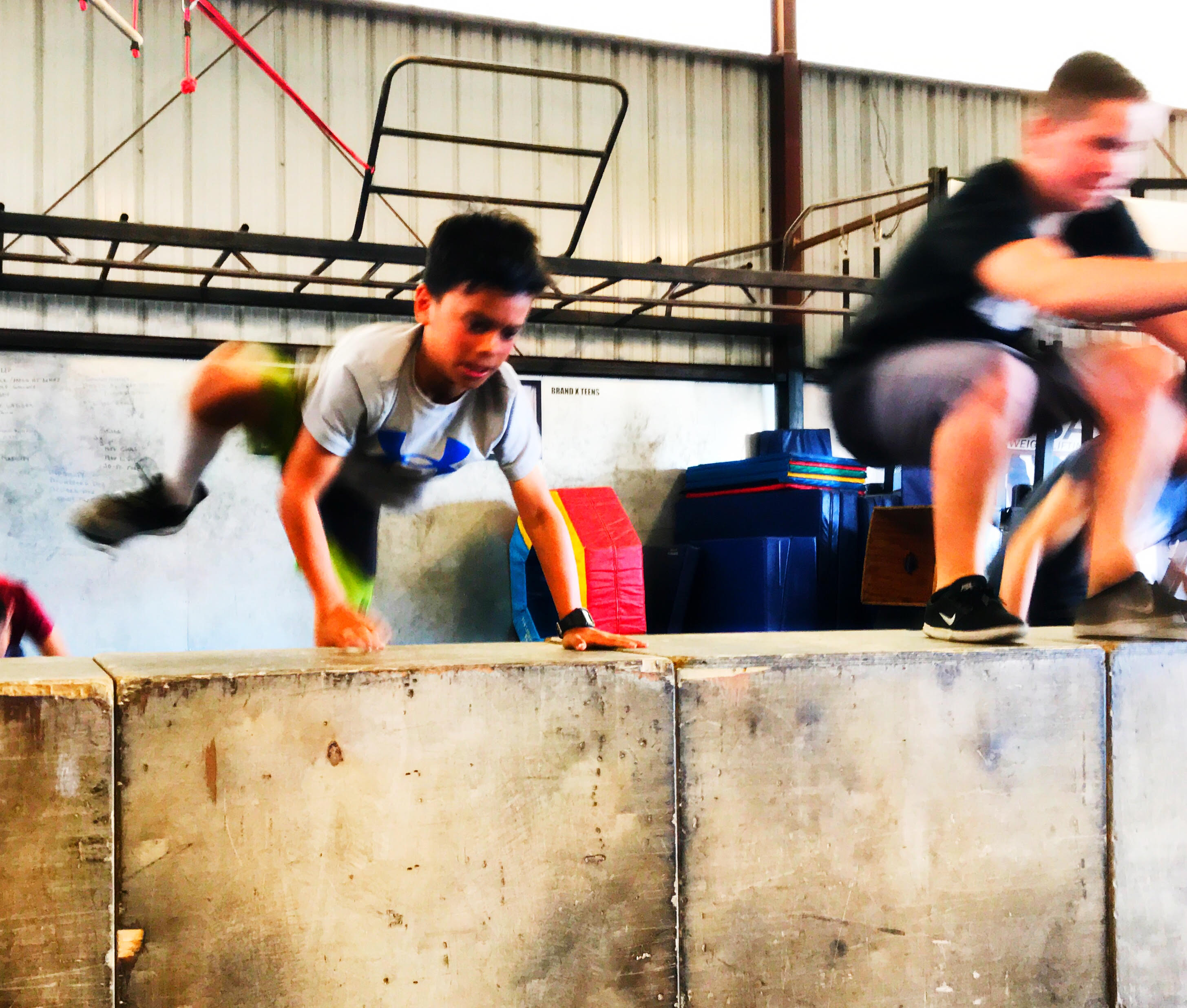Why Should Kids Workout? Part TWO of TWO
The goal or intent of a program is the program’s Why. In the past few years, it has become pretty well accepted in the functional fitness world that work capacity is the definition of health and therefore increasing work capacity is the goal of working out. Chasing work capacity defines the program’s exercise choices, workout design, and implementation. It’s not our place to question whether or not this is an appropriate goal for an adult program. I will leave that to James Fitzgerald to discuss.
Increased work capacity should be but one goal among many
We have seen adult-based programs that have been scaled down for kids apparently programming as if the goal of a kids program is the same as an adult program. In Mikki’s blog she asked the question, “is increased work capacity or power output a proper goal for a 7-year-old?” Is increased work capacity really the gold standard of fitness for youth? Certainly, work capacity is a measure of fitness for youth, but should it be the sole focus that the adult-based programs claim it should be?
Growing humans, growing capacity—it’s simply biology
Work capacity is defined as the ability to perform real physical work as measured by force x distance / time (which is average power). If this is the point of your fitness program, ideally, you should be able to measure an increase in your work capacity over the course of your training. If your squat was 200 x 10 and you later performed 225 x 10, you have increased your work capacity. If you ran a 10:00 minute mile at the beginning of your fitness program and retested the mile at 8:00, you have increased your work capacity. For an adult, an increase in work capacity almost always requires some effort toward that goal.
But this is not true for kids. For children, biology governs increased capacity. In other words, 10-year-olds will almost certainly be bigger, stronger, and faster than they were when they were 5. Increased work capacity alone does not determine that a 10-year-old is a fitter version of his 5-year-old self.
Full access to the library of human movement
If increasing work capacity is not the goal of a youth program, what is? You can begin to appreciate the need to answer this when you realize that what kids need differs by both degree and kind from adults. What do kids need to live an optimal life? For all the reasons stated in Mikkis blog, we know kids need to move.
We believe that the goal of any youth fitness program must set children up for movement through their lives.
- To teach kids to effectively and safely move within the 6 primal movement patterns—core, squat, hinge, lunge, push, and pull.
- To translate those movement patterns to fundamental physical skills such as jumping and landing, rolling and tumbling, carrying, climbing and swinging, or gliding.
Our contention is that the goal of a youth fitness program should be to expand and optimize children’s exposure to the complete library of human movement so that they may express all possible physical capabilities at the highest level.
Prepare, practice and play
The Brand X Method embraces this in each class with our Prepare • Practice • Play framework, which provides an easy-to-retain class structure and acts as a training roadmap for coaches.
Physical skills are introduced in Prepare. Movement patterns are worked on in Practice. As kids move through our program, they learn new skills and refine movement patterns in both an age and developmentally appropriate manner. Kids then apply what they learn to movement problems presented during Play, creating their own unique movement solutions.
This expanded physical capability can be defined as physical literacy, which is foundational to athleticism. We’ve all seen kids like this. Kids with the confidence, competence, and motivation to engage with all of the varied environments they encounter in the world. They move differently, with a distinctive rhythm and grace; they’re often called “natural athletes.” The world is their playground, and they’re capable of playing there for the rest of their lives, moving from one challenge to the next with freedom and fearlessness.

